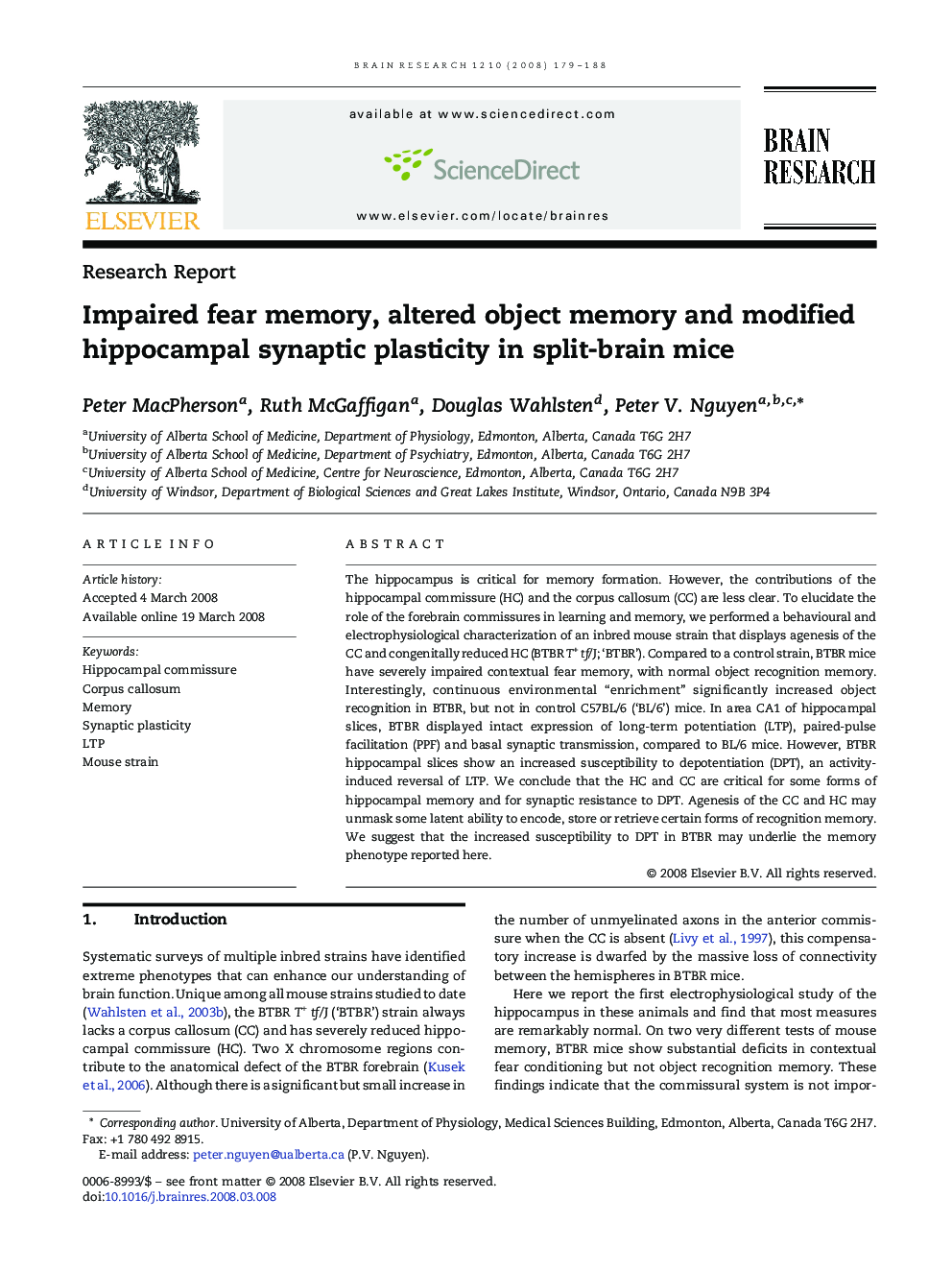| Article ID | Journal | Published Year | Pages | File Type |
|---|---|---|---|---|
| 4329665 | Brain Research | 2008 | 10 Pages |
The hippocampus is critical for memory formation. However, the contributions of the hippocampal commissure (HC) and the corpus callosum (CC) are less clear. To elucidate the role of the forebrain commissures in learning and memory, we performed a behavioural and electrophysiological characterization of an inbred mouse strain that displays agenesis of the CC and congenitally reduced HC (BTBR T+ tf/J; ‘BTBR’). Compared to a control strain, BTBR mice have severely impaired contextual fear memory, with normal object recognition memory. Interestingly, continuous environmental “enrichment” significantly increased object recognition in BTBR, but not in control C57BL/6 (‘BL/6’) mice. In area CA1 of hippocampal slices, BTBR displayed intact expression of long-term potentiation (LTP), paired-pulse facilitation (PPF) and basal synaptic transmission, compared to BL/6 mice. However, BTBR hippocampal slices show an increased susceptibility to depotentiation (DPT), an activity-induced reversal of LTP. We conclude that the HC and CC are critical for some forms of hippocampal memory and for synaptic resistance to DPT. Agenesis of the CC and HC may unmask some latent ability to encode, store or retrieve certain forms of recognition memory. We suggest that the increased susceptibility to DPT in BTBR may underlie the memory phenotype reported here.
